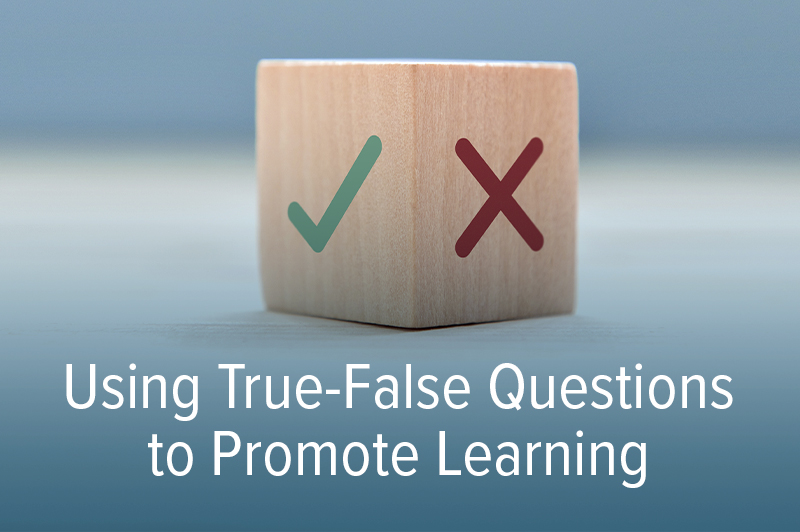

Matthew J. Hays, PhD
Senior Director of Research and Analytics
Tests don’t just evaluate what you know. The act of being tested actually makes your memory stronger. Think about it. You want to improve your ability to retrieve information from your brain. What could be better practice than…retrieving information from your brain?
Unfortunately, tests get a bad rap – but some are perceived to be even worse than others. It seems like the harder it is to make a test and evaluate its responses, the better its reputation. Essay tests are supposedly the best, while everyone looks down on multiple-choice tests (even though they shouldn’t). True-false tests are at the very bottom of the heap.
But they don’t have to be.
In a series of studies published in July of 2020, researchers in the Bjork Learning and Forgetting Lab at UCLA have revealed how to construct true-false questions in a way that enhances learning beyond what previous true-false questions have been able to achieve.
For example, suppose you wanted someone to learn that Steamboat Geyser is the tallest geyser in Yellowstone Park. After having them read about geysers, you could use a true-false test to reinforce what they read. On that memory-enhancing test, you could use a true item: “Steamboat Geyser is the tallest geyser in Yellowstone Park, true or false?” You could also use a false item: “Castle Geyser is the tallest geyser in Yellowstone Park, true or false?”
These questions are somewhat limited in their instructional value. When an item is true, it helps people learn only about the topic of the true-false statement. For example, the Steamboat question above only reinforces that Steamboat is the tallest. When an item is false, however, it helps people learn only about information related to the true-false statement. For example, the Castle question above only reinforces that Steamboat is the tallest – but does nothing to enhance learning about Castle Geyser itself.
The Bjork lab’s discovery: Inserting a contrasting clause into the question activates more concepts in your brain. For example, you could make a true item with a contrasting clause like this: “Steamboat Geyser (not Castle Geyser) is the tallest geyser in Yellowstone Park, true or false?” You could also make a false contrasted item like this: “Castle Geyser (not Steamboat Geyser) is the tallest geyser in Yellowstone Park, true or false?” Both questions help reinforce information about both geysers.
We are building these findings into the Amplifire platform, our authoring system, and our content analytics. If you’d like to know more about the science or the software, reach out here!







